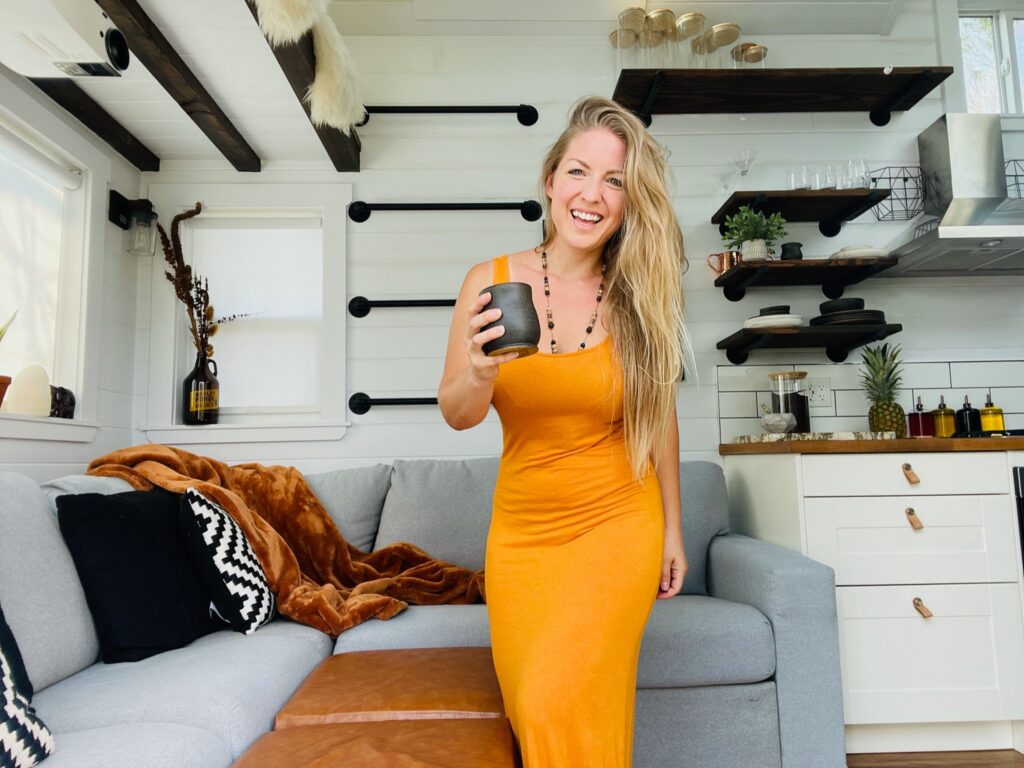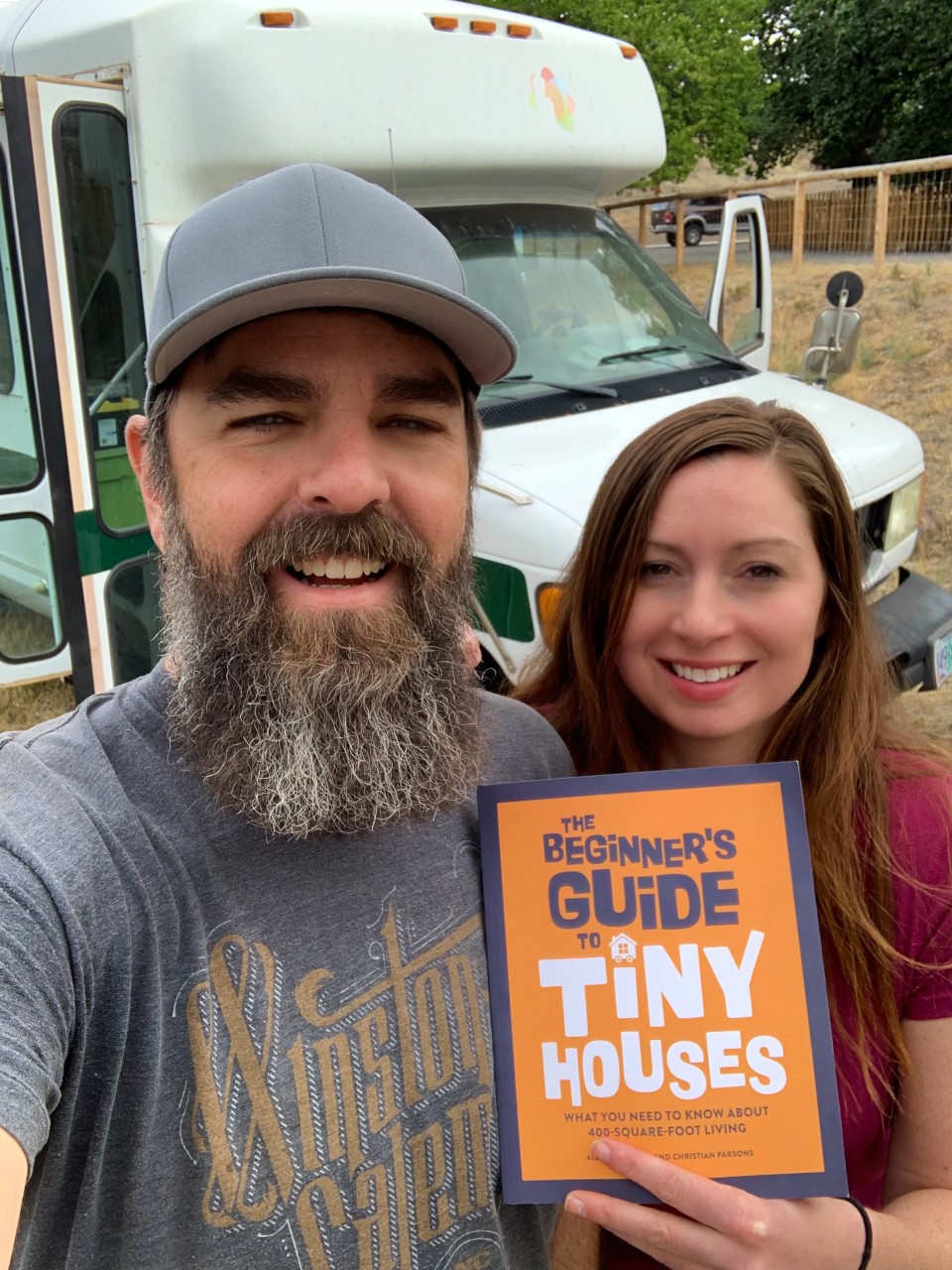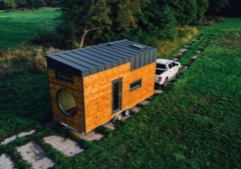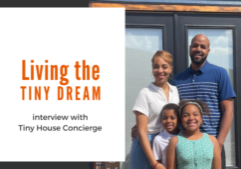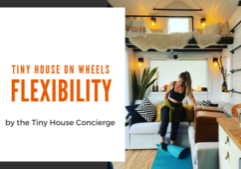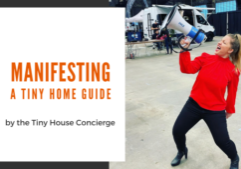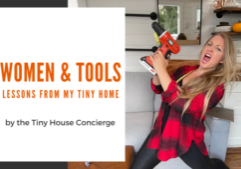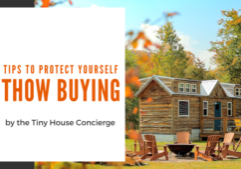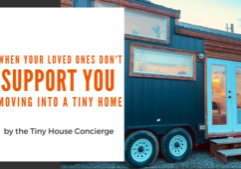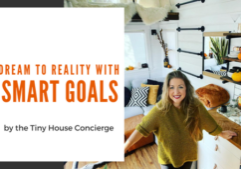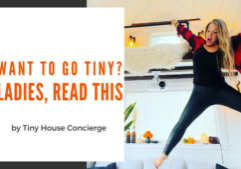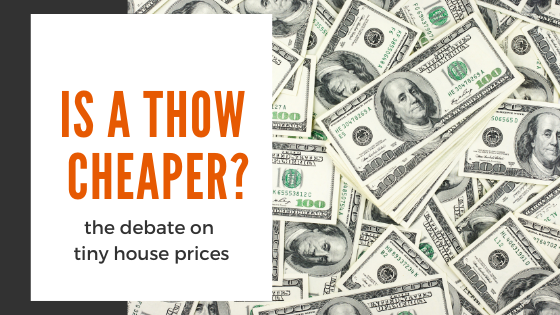
Tiny House Prices Great Debate: Are THOWs Cheaper?
Tiny house prices: affordable or too high? — Guest Post by The Tiny House Concierge
Hello, Friends!
Welcome back to this guest post series! My name is Alaska, AKA The Tiny House Concierge. This article is part 3 of 5. If you'd like to catch up on parts 1 and 2, you can do so here and here.
Today we are going to examine one of the great tiny house debates: are tiny homes cheaper? More specifically, we will explore why this may not even be the question we need to be asking about tiny house prices.
Before I get too deep into it, I want to address the crux of the price tag commotion: No, you're not crazy; tiny houses are getting more expensive over time.
But why? It's so unfair! Tiny houses are small! They should be cheap! I heard some guy built one for five thousand dollars, and I just saw one advertised for 165k! People are taking advantage! The government! It's because of society, George!* Annnnd so on.
I empathize with these sentiments. After all, if a house is smaller, shouldn't it cost less than a regular-sized house? Why would you spend 165k on a depreciable asset when you could spend half that on something that includes land? I want you to know that I hear you, and I think this conversation will make more sense if we start with an understanding of how the price increase came to be.
Let's dig into tiny house prices further.
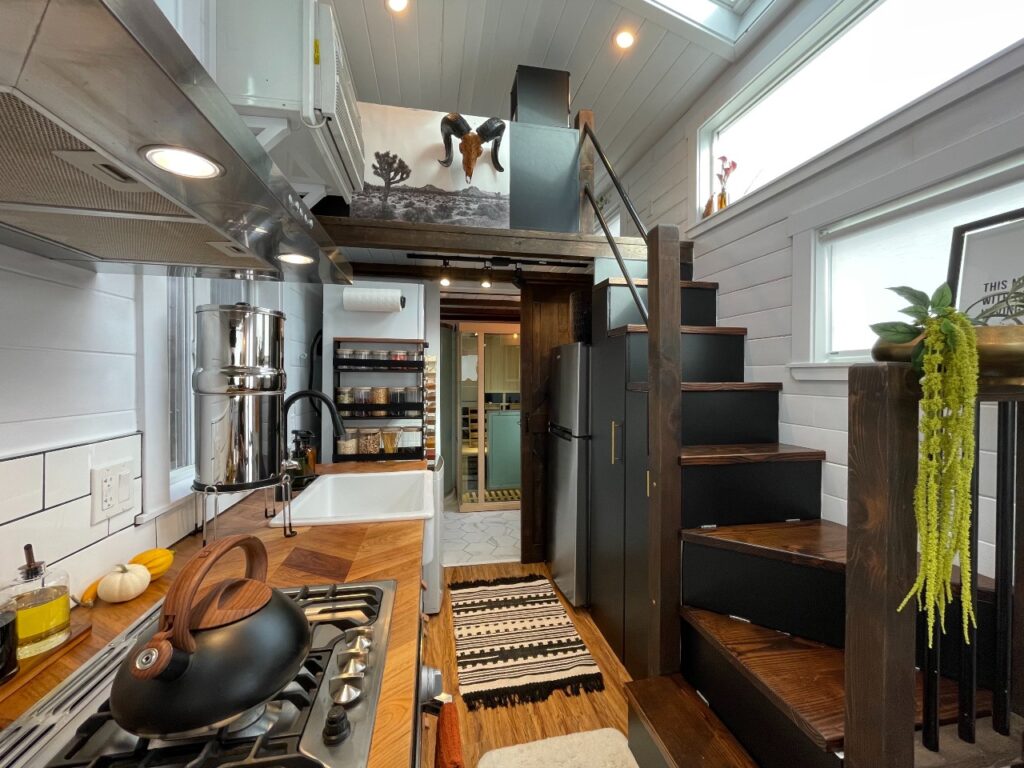
A $5k Tiny House VS an $80k Tiny House
Once upon a time, we all heard the story of a seemingly mythical man who built a tiny house for five thousand dollars. While it's true that Jay Shafer (the man credited with spearheading the modern tiny house movement) managed to pull this off, we can't ignore the differences between what he built and the tiny houses we see on the market today.
The famous, five thousand dollar house was approximately fifty-six square feet in size. It was built in part with salvaged materials, and the heating element was driven by a candle, two candles in winter. Jay also did the work himself.
For comparison's sake, we'll use my tiny house as an example.
My tiny house was built in 2018 and cost the original owners around 80k for the build, plus an additional 10k in transportation costs and import taxes. (My house was born in Canada). It has all modern conveniences, including a stackable washer and dryer, a refrigerator, and AC and heating elements. It was also double plumbed for both a composting and regular, flush toilet.
While Jay's house is beautiful, we can't overlook that mine is more than four times the size. We also can't ignore the fact that I have a kitchen. Whereas Jay stuck to a streamlined aesthetic with simple materials, I chose a house that features butcher block countertops, a farmhouse sink, and a rainfall showerhead.
These are things we might naturally picture when we think of a tiny home, but we have to acknowledge that they add significantly to the cost! It's also worth noting that my house came with a 3rd party certification sticker oh and that I didn't build or transport the house myself.
Yes, but that still doesn't explain the 165k tiny house!
Well, that's because tiny houses have gotten even grander since mine was built. Now there are four-hundred square foot tiny homes on the market. These mini-mansions are frequently built on triple axle, gooseneck trailers and feature things like double lofts, dishwashers, and soaking tubs. Many are made to have both on-grid and off-grid capabilities as well.
Size and features are not the only things driving up tiny houses prices, however! The cost of building materials has skyrocketed this past year, as has demand. Additionally, certain builders have become more sought after, and well, their bids reflect that.
So, what does it all amount to? You guessed it: a more expensive tiny house.
So, now what? Am I missing the point of a tiny house? How about the people purchasing the 165k+ situations? Some people would respond with a resounding yes, but I don't see it that way.
Tiny houses can sometimes be a less expensive housing option, and it's sometimes "the point." While saving money was a major draw for early pioneers of the movement, as the movement evolves, so have the goals associated with going tiny.
As more people flock to the tiny house lifestyle, we're seeing a wider variety of motivations, including locational flexibility, carbon footprint reduction, desire to pull focus to hobbies or family, increased self-sufficiency, the ability to afford a higher-end home, desire for an income-producing asset, to have a stepping-stone into a high-priced real estate market, and to keep loved ones nearby while giving them a space of their own! Sometimes people go tiny, simply because it seems like fun!
Tiny House Prices & Designs: No Wrong Anwsers
Friends, I have to get something off my chest: I truly believe there is no wrong reason (or wrong way!) to go tiny.
The houses might be evolving, but I believe that today's tiny dwellers seek the same thing as the pioneers: well-being. The question then becomes, are tiny houses still the best route to well-being even with the increasing costs?
Hmm. Maybe.
I often hear people say something like, "I want to buy land and put a tiny house on it." Usually, they are under the misguided impression that a tiny house will be a cheaper and easier route to the life they desire. Unfortunately, as both a realtor and tiny homeowner, I can almost guarantee it won't be either of those things. It could still be the best path to well-being, however!
I know it's frustrating not to have concrete answers, but our situations are too individual to give a one-size-fits-all response to the question, is a tiny house worth the money? This is why I usually suggest that would-be tiny housers begin by defining the goals of their life. Then, once defined, they can evaluate whether or not a tiny house is the best vehicle to get them to their goals.
Now that we understand how the movement has evolved and why tiny homes are getting more expensive, let's examine that pesky tiny house price tag.
There are many ways to evaluate a tiny house price tag, and I think it's important to consider it from multiple angles. "Cost" is the obvious one, but it won't be a complete conversation unless we also take into account "value" and the possibility of a tiny house to be "fiscally advantageous." Don't worry, I'll explain!
Let's begin with cost.
Money is a limiting factor for most of us, so even if well-being is "the point" of a tiny house, it's easy to understand why people get hung up on the cost part of the equation. (Also, as a side note, let's not discredit the role financial stability plays in our well-being!) When we evaluate a tiny house price tag based on cost, we naturally come to the question: is a tiny house cheaper? My response to this is: well, cheaper than what?
In 2019 I lived in Wichita, Kansas. During that time, I made an offer on a traditional house priced at 60k. The house was over seventy years old, needed some work, and didn't have modern conveniences like AC. Ultimately, the deal didn't work out, and I ended up purchasing my secondhand tiny house for 78k instead. Was my tiny house "cheaper" than the three-bedroom, one-bath in Kansas? No, but let's look at another scenario.
I now live in Boulder County, Colorado. Houses in my new neighborhood range from 675k to 1.3 million. All of a sudden, 78k to own my roof is looking pretty good! Is it cheaper? Now it is—by a lot!
My point is that "cheaper" depends entirely upon our perspective.
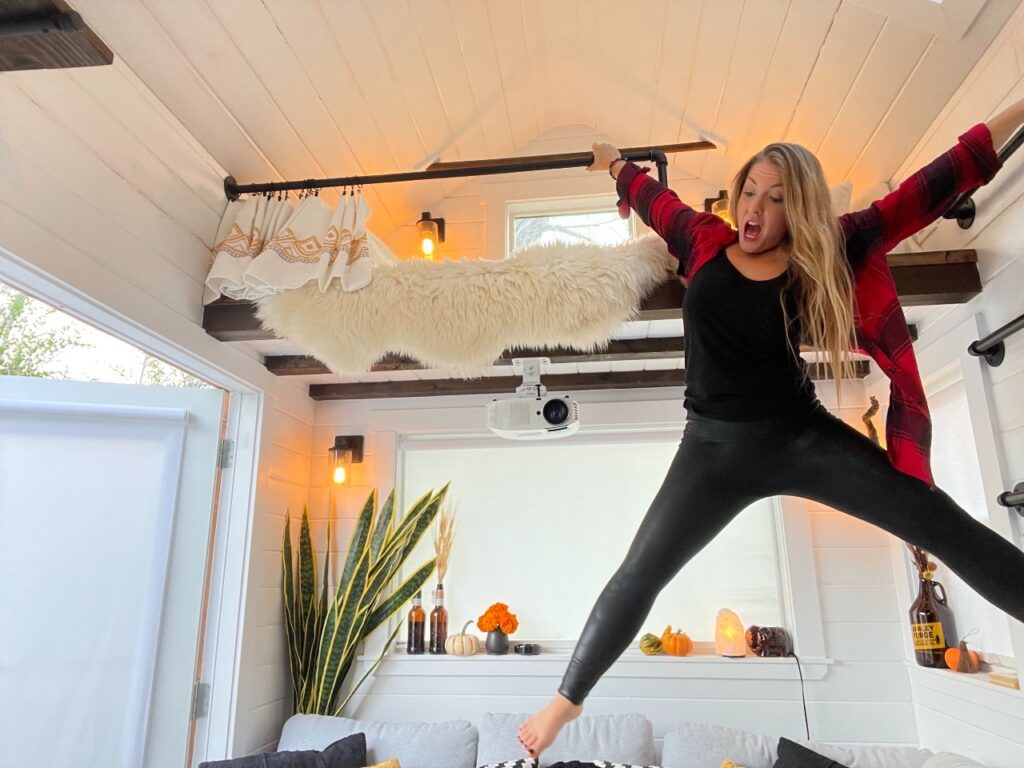
Now let's compare my tiny to the house in Kansas from a value standpoint.
At 267 square feet, my tiny house is a fraction of the size, cost me more, and didn't come with land. Some would say I made a ridiculous choice in buying the tiny house, but there are benefits too:
- Unlike the house in Kansas, my tiny is newer and doesn't come with the maintenance of an old (or regular-sized!) house.
- My house has vaulted ceilings, skylights, a gas range, and other features not commonly found at a sub-100k price tag.
- My house moves, which gives me locational flexibility and keeps me from relying on a particular real estate climate to sell in my favor.
This is where value comes into play. If I had teenage boys and two St. Bernards, I might get more mileage out of a backyard. But, since I'm a single person who's short on time and lives for design, a tiny house provides me with more value.
Tiny House Cost Vs Value
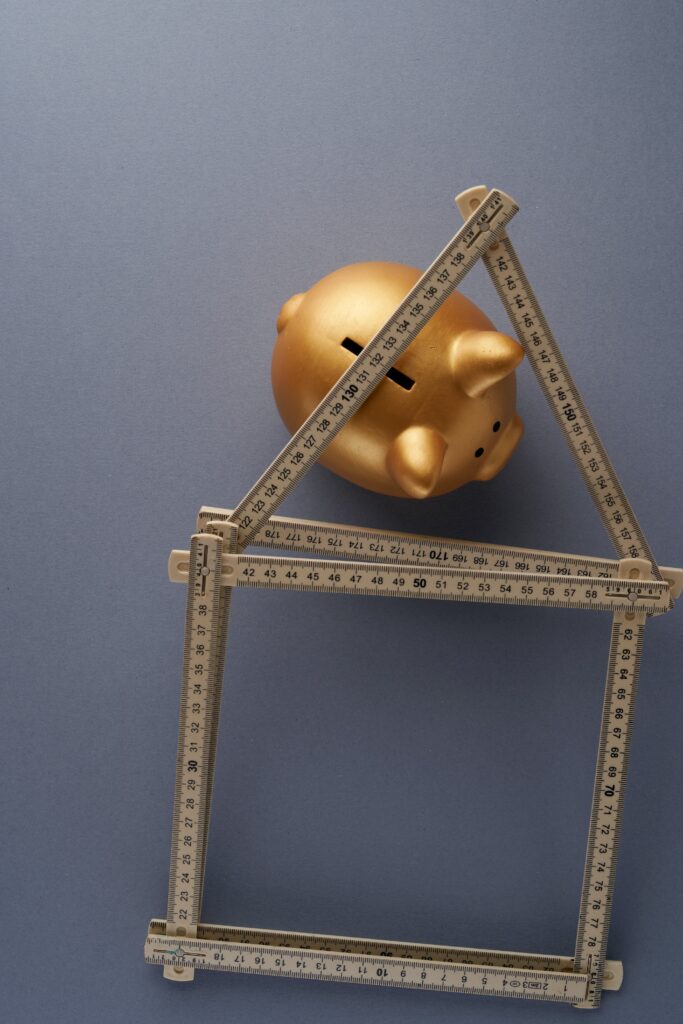 Value is an area that tends to get people up in arms, but why? Can't we all value different things? I see people lose it over the price of a tiny house every day, but I suspect they are not reacting to a number as much as they are responding to a value discrepancy. People don't want to pay more for things they value less and guess what? That's OK.
Value is an area that tends to get people up in arms, but why? Can't we all value different things? I see people lose it over the price of a tiny house every day, but I suspect they are not reacting to a number as much as they are responding to a value discrepancy. People don't want to pay more for things they value less and guess what? That's OK.
That being said, our differing values make it imperative that we do a personal inventory before embarking on a tiny journey. Do you value more space or higher-end appliances? You might value potential land appreciation, but do you value it over locational flexibility?
And here we are again: The answer depends on your perspective.
Now, look at the third consideration. Is choosing a tiny house more "fiscally advantageous?" By fiscally advantageous, what I mean is, do you stand to benefit more from a tiny house (fiscally speaking) even despite a higher price tag?
This one is a little tricky. I think it's easier to understand using the example of a duplex, so I'll start there. Let's say saving money on housing is your primary concern. You could:
- A) buy a regular, single-family house
or
- B) buy a duplex.
The duplex might be more expensive, but if you lived in half and rented out the remaining half, you might end up with a less costly (or even free!) roof over your head. Is it "cheaper" than a single-family house? No, but is it more fiscally advantageous? Possibly!
Now let's apply that logic to a tiny house.
Tiny houses are currently going through a 'boom.' They're fun, the world is excited about them, and people can't get enough. As a result, tiny housers have the unique opportunity to profit from their pioneering efforts. All over the internet, you can find tiny homeowners who are building Instagram audiences, writing e-books, selling merchandise, hosting YouTube channels, and using their platforms to offer tiny-house-related services of all kinds.
Would people have tuned into my Instagram to hear the story of me buying a traditional house in the middle of the country? Would they purchase e-books on that lifestyle? Well, there's always someone, but it's less likely.
So, let's review my decision.
I am a single human who has no idea where the world will take her next. My family and friends are spread out all over the country, so there's no "one place" that makes sense for me to be. As I work in real estate,** it behooves me to live in an expensive market. I want to own my roof, and I value aesthetics as well as low-maintenance living spaces. I'm also interested in using my tiny home to build multiple streams of income and have the skill sets necessary to do so.
When you add it all together, you can see that even though my tiny cost me more than a house in Kansas, it was still the best option given my set of circumstances. My choice provided me with the most value, was the most fiscally advantageous, and (when compared to the area I currently live) was the cheaper option!
I want to reiterate that there is no wrong housing choice—there is only the right one for you. The tiny house movement, like all movements, will continue to evolve, bringing with it both disheartening and positive changes along the way.
Tiny House Prices: What's Right for You?
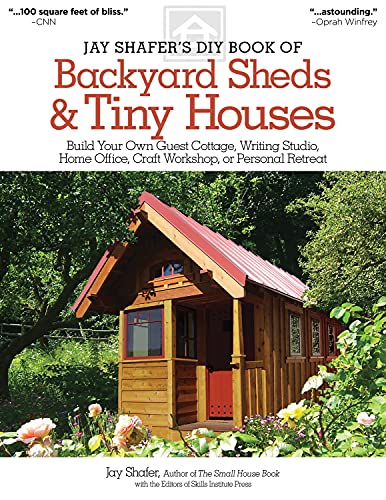 I hope I've shed some light on the tiny house price tag and given you the tools to evaluate it more fully. More than that, though, I hope I've inspired you to do that aforementioned inventory of your life.
I hope I've shed some light on the tiny house price tag and given you the tools to evaluate it more fully. More than that, though, I hope I've inspired you to do that aforementioned inventory of your life.
What values do you hold? What skill sets do you have? What do you find emotionally draining or energizing? What is your life about?
If tiny living is for you, please don't let the price tag get you down. At its core, a tiny house is nothing more than shelter, and at our core, is nothing more than a desire for well-being.
Luxury tiny houses might get more screen time, but let's not forget the story of the man who created a simple structure with reclaimed materials fastened together with his own blood, sweat, and tears. There are still tools to be tinkered with and backyards to build things. Nestled in the shadows of the tiny-house gold rush, the opportunity to go Jay Shafer*** remains.
Until next time,
-Alaska
*Seinfeld reference, for all you fans out there!
** That's right, I'm a realtor who lives in a tiny house! This factoid is endlessly amusing to me, but it just goes to show you that I genuinely believe in your right to value anything you want!
***I want to acknowledge that one's ability to "go Jay Shafer" requires access to tools, a build space, and the ability to obtain various skill sets. Also, DIY structures can fall into legal gray areas, and while the realtor in me would never suggest you do anything illegal, the human in me wants to see a roof over everyone's head.
Alaska is a writer, realtor, and tiny homeowner living in the great state of Colorado. She is the founder of The Tiny House Concierge, a company that provides education and consultation services for people looking to re-think their housing and re-write their lives. You can find her on Instagram: @tinyhouseconcierge.

